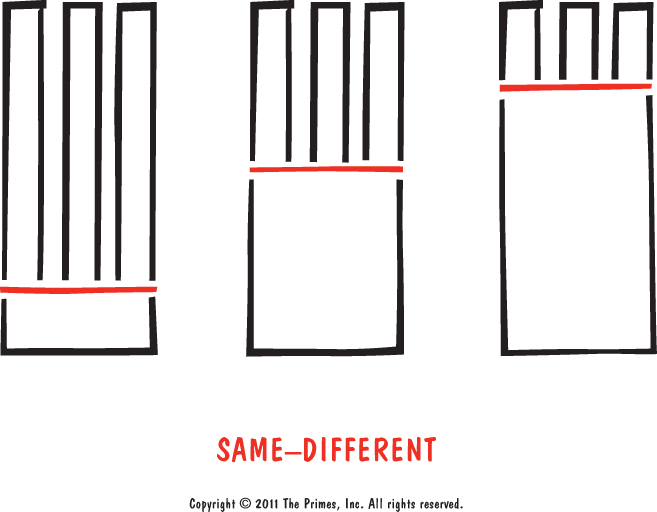
Everybody's special. Really?
One of the largest sources of resistance to large-scale collaboration is each person's belief that he or she is special and has unique needs that other members of the group do not share. The idea of using a common system or process scares these people; they don't think such an approach will accommodate their individual needs. The SAME–DIFFERENT PRIME can help people get over this fear.
Each of the three images in the SAME–DIFFERENT PRIME represent the structure of an enterprise. The box at the bottom shows the part that is consistent across operating units, while the stacks represent the parts that are unique to each one. For example, the one on the left with the tall stacks would represent a firm like GE, while a brand like McDonald's is represented on the right. GE gives its operating units, like the jet engine division, GE Finance, and GE Home Appliances, a terrific amount of operating discretion (the tall stacks). But GE has a consistent way of running its finances (the small shared box at the bottom). McDonald's, on the other hand, gives almost no discretion to its operating units (the short stacks). Each restaurant looks and behaves almost exactly like any other McDonald's restaurant (the large shared box). Neither approach is right or wrong; both of these companies are very successful. They are simply structured differently. ...
Get The Primes: How any Group can Solve any Problem now with the O’Reilly learning platform.
O’Reilly members experience books, live events, courses curated by job role, and more from O’Reilly and nearly 200 top publishers.

